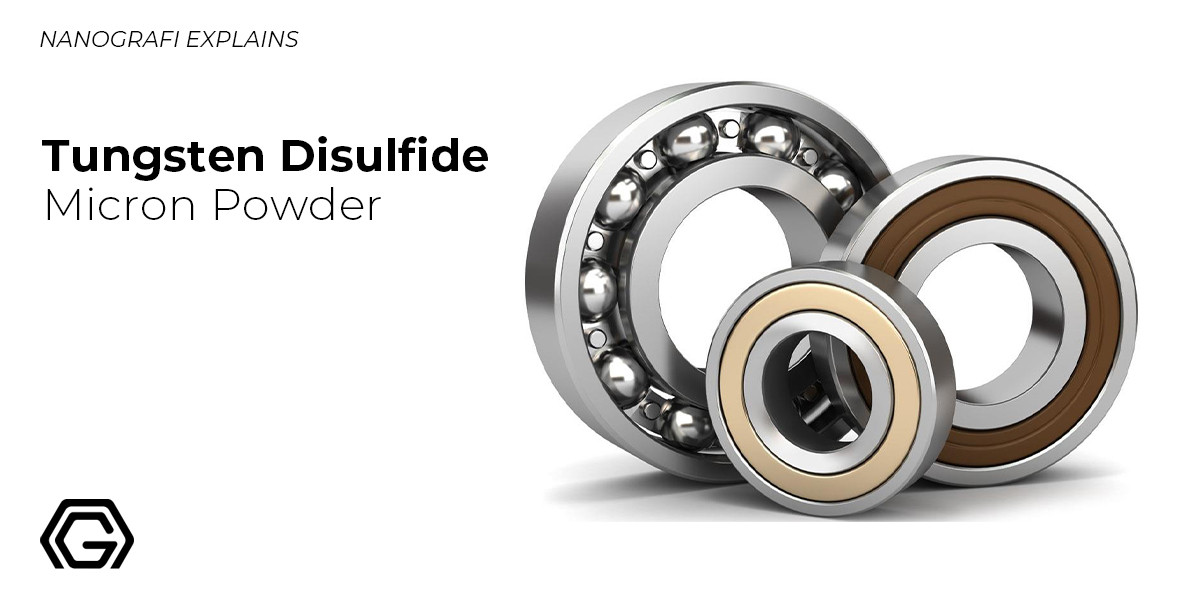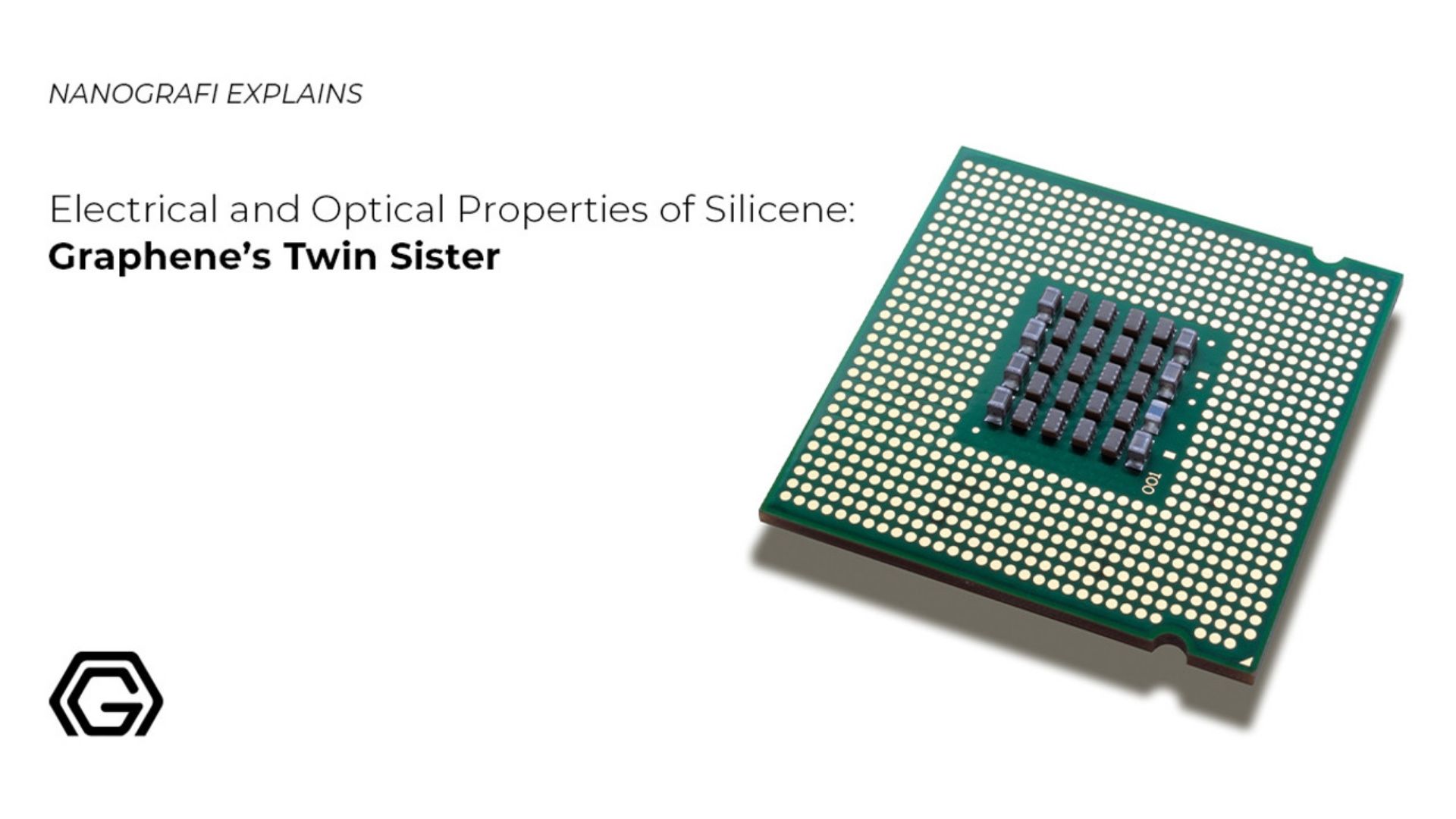Tungsten Disulfide (WS2) Micronpowder
Tungsten disulfide (WS2) is a well-known super lubricant with almost zero friction that has a two-dimensional (2D) crystalline structure.
WS2 has shown favorable tribological properties possessing wear-resistance and lubricating behaviors while having almost no friction.
Vahid Javan Kouzegaran
Analytical Chemist (Ph.D.) / Nanografi Nano Technology
Introduction
The so-called tribological characteristic of WS2 is as a result of its axial ratio with the numerical of at least 1.87 leading to a low friction coefficient. With its six nonbonding electrons, tungsten sulfide exhibits a network of positive charges on its surface layer being confined to its hexagonal structure. Such an electronic property in tungsten disulfide causes it to go through its electrostatic repulsive force easily with no spatial barrier. This 2D material isn’t easily oxidized and has a higher thermal stability. Tungsten sulfide’s oxidization resistant quality is induced by the formation of tungsten oxide (WO3) making tungsten sulfide thin films growth feasible on stainless steel via pulsed laser deposit in which the steady-state friction coefficient against counter face is only 0.04. This is regarded as a required and necessary standard value. The thickness of films based on WS2 is around 60nm which is transparent enough for an electron beam 1.a
Physical and Chemical Properties of Tungsten Disulfide (WS2)
Tungsten sulfide is categorized as an interesting two-dimensional material and known to be a transition metal dichalcogenide (TMDC). As a member of 2D materials, WS2 possesses excellent optoelectrical (optical and electrical) properties and a wide range of energy. It is a strong nucleophile as well with high carrier capability in a broad wavelength range. Tungsten disulfide covalently binds to six other neighboring chalcogenides in the same plane and uses Van der Waals forces to bind to sheets and layers above and below its plane. Two dimensional materials like WS2 have natural self-passivated surfaces with no dangling bonds. Such a property makes it easy for the 2D materials to integrate them with photonic structures like cavities and waveguide structures. In general, waveguide structures are capable of guiding electromagnetic waves and sound with the least waste of energy through restricting the waves and transmission energy to only one direction. Moreover, through applying two dimensional materials, it is feasible to stack different 2D materials on each other vertically in order to create Van der Waals heterostructures that lack any conventional lattice mismatch and defects. The films made by tungsten disulfide are originally and highly thin and interact strongly with incident light absorbing some 10% of that. Tungsten sulfide and versatile two-dimensional material is able to interact with electromagnetic light at a wide range of spectrum due to its electronic properties 2.
Bulky tungsten disulfide forms dark layered crystal of hexagonal pattern with dry lubricating properties. Even though tungsten sulfide is regarded a relatively stable material in ambient temperatures, there are reports suggesting oxidation of monolayer tungsten disulfide in the air. When WS2 is in the monolayer form, it converts to tungsten oxide via photo oxidation reaction much faster over a period of a few days while being exposed to sunlight and atmosphere. The mechanism through which tungsten disulfide is oxidized is believed to be Forster resonance energy or Dexter electron transfer. In addition to this, WS2 is reactive with nitric acid and hydrofluoric acid and when it’s heated up in an atmosphere containing oxygen it yields tungsten oxide (WO2). In the absence of oxygen however, it decomposes to produce tungsten and sulfur at temperatures over 1200°C.
If you are interested in the properties of silicene,
you can read our blog post here.
What is a Micron Powder?
Particles and mostly crystals can be classified according to their size as nano and micron. Generally, the particles with their sizes around 70 microns are referred as micron particles while those with sizes below 100nm are considered as nanoparticles. Tungsten disulfide is synthesized in micron and nano scales with different properties as well.
Preparation of Tungsten Disulfide Micron Powder
Conventionally, monolayer tungsten disulfide is produced by chemical exfoliation and through intercalating it with lithium obtained from n-butyl lithium in hexane along with the consecutive exfoliation of Li-intercalated compound through sonication in water. In so doing, tungsten disulfide is exfoliated via treatment with agents like lithium halides and chlorosulfonic acid.
Ways of Application of Tungsten Disulfide Micron Powder
Tungsten disulfide is applied on surfaces through spray blasting, buffing with alcohol/WS2, tumbling or vibratory method and use of nano silk grease or oil. The spray blasting method, which is among the most common, reliable and widely used methods, must be done in enclosed spaces namely sand blasting unit. The buffing method using alcohol/WS2 takes a bit longer and needs a lot of work. However, speed and friction are factors that affect the binding of the powder to the surfaces. In fact, the greater the pressure and speed, the better will the binding be. In order to achieve the most favorable result, the use of a power tool is recommended. The tumbling or vibratory method is appropriate for bullets and parts that are similar to them and speed and friction are also regarded determining factors. Among all, use of nano silk grease or oil is the least laborious method and can turn out to be an efficient technique over time through which, tungsten sulfide is gradually coated on mating target surfaces via pressure rubbing during the movement of parts on each other.
Applications of Tungsten Disulfide Micron Powder
Tungsten disulfide is regarded as an agent with the highest lubrication quality providing satisfactory dry lubricity when applied on mating surfaces. Tungsten disulfide can be applied as a perfect agent between layers because it doesn’t match any other substance. There are recent reports of WS2-based transistors as well as vertically stacked WS2-graphene transistors used on flexible substrates. Tungsten disulfide is advantageous due to the fact that it possess a wide range of thermal stability as it is resistant to cryogenic temperatures as low as -270˚C and higher temperatures of about 650˚C in the Earth atmosphere. In outer space and vacuum condition, it is also stable at temperatures from -188˚C to 1316˚C making it a qualified lubricious material to be employed in space exploration equipment and devices. At the moment, WS2 has found applications in aerospace technology, shafts, linear and roller bearings, marine transportation engine parts, race cars engines, engine pistons, mechanical and automotive parts, ball, gears with high precision and so forth.
Conclusion
Tungsten sulfide has emerged as a promising dry lubrication agent with practically favorable applications in a wide range of industrial and technological devices, machines and parts. Higher thermal stability and the decline in friction and the ease of moving parts on each other even at higher temperatures are the points that make tungsten disulfide as a qualified gent in numerous applications.
To get more information, you can visit Blografi.
References
1. Joly-pottuz, L. & Iwaki, M. Superlubricity of Tungsten Disulfide Coatings in Ultra High Vacuum. Superlubricity (Elsevier B.V., 2007). doi:10.1016/B978-0-444-52772-1.50045-7.
2. Polyakov, A. Y. et al. Magnetron sputtered WS 2 ; optical and structural analysis. (2016) doi:10.1088/1742-6596/707/1/012028.
Recent Posts
-
Turning Noise into Power: Energy Harvesting with Piezoelectric Nanogenerators
Ambient acoustic energy, once an untapped resource, is now being converted into sustainable electric …5th Mar 2025 -
Holey Super Graphene in Li-ion Batteries: Next Generation of Energy Storage
Holey Super Graphene (hG), also referred to as “holey graphene,” is redefining li-ion ba …7th Feb 2025 -
Future Communication with 5G Technology and Advanced Materials
5G technology opens the doors to a new era in communication with faster connection speeds, low laten …6th Feb 2025







